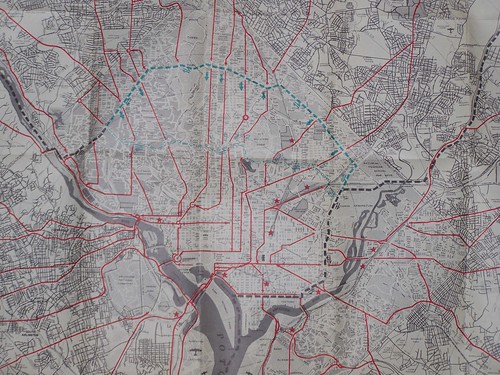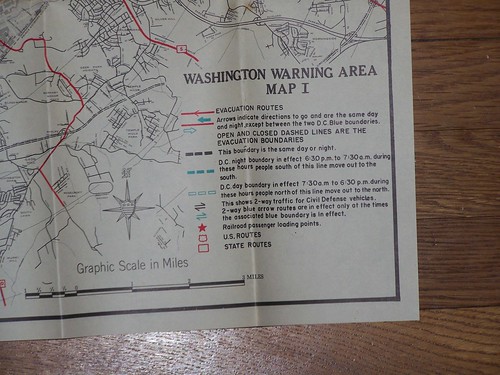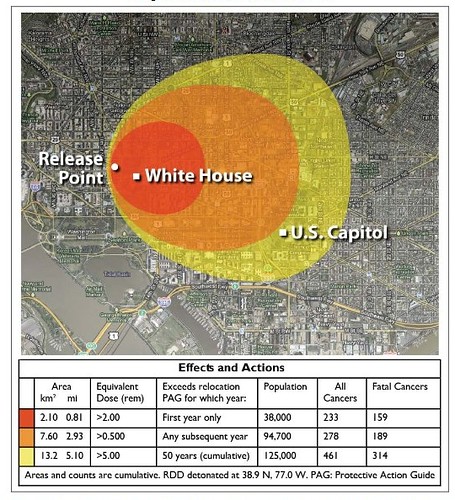Local DC as collateral damage from nuclear war with North Korea
 Don't know if you've watched any episodes of "The Americans," the FX tv show set in the 1980s featuring Soviet spies based in the DC suburbs and FBI counterintelligent agents.
Don't know if you've watched any episodes of "The Americans," the FX tv show set in the 1980s featuring Soviet spies based in the DC suburbs and FBI counterintelligent agents. The wife is a hardcore Soviet supporter, while the husband's attitudes have been somewhat ameliorated by living in US for 15+ years and figuring out that there is a big difference between the national rhetoric and the reality.
One of the arcs concerned the shooting of President Reagan and fears by the US Government that it was done by the USSR and counter-fears of the Russians that Gen. Haig was leading a military coup and that tensions would escalate to war. The husband cooled things out, while the wife (Keri Russell) was fully prepared to ratchet up the response which could have been very terrible.
The husband, and another character, a low level assistant at the Soviet Embassy who has been turned by the FBI, both made the point that spies ought to be working to avoid bringing nuclear war down upon us, not to be increasing the likelihood of apocalypse.
 2. Anyway, North Korea isn't happy about UN sanctions on their nuclear weapons programs, especially the sale of parts to Iran, so they're threatening to incinerate Washington, DC, where I live. See "North Korea threatens to nuke DC: why it's especially angry this time" from the Christian Science Monitor.
2. Anyway, North Korea isn't happy about UN sanctions on their nuclear weapons programs, especially the sale of parts to Iran, so they're threatening to incinerate Washington, DC, where I live. See "North Korea threatens to nuke DC: why it's especially angry this time" from the Christian Science Monitor.Depending on the size of the bomb, much of the city could be disintegrated.
A 10 kiloton nuclear bomb would destroy up to a 3 mile radius from the epicenter, according to the federal document National Planning Scenarios.
Hopefully the North Koreans are just posturing.
Because I don't think that the 1959 Civil Defense Action Plan booklet that I found at the Pyramid Arts Center's "Yard Sale" will help us all that much. The maps are great though.
 3. It does remind me though of a point I make, that DC is defined by virtually all the world as the capital of the United States and an icon of American power, not as a place where people live.
3. It does remind me though of a point I make, that DC is defined by virtually all the world as the capital of the United States and an icon of American power, not as a place where people live.Interestingly, in the book Fail Safe, where the US accidentally bombs Moscow (a group of bombers gets the code to drop its nuclear bombs on Moscow because of a electronic systems failure) and the President makes an "eye for an eye" response to show the US's good faith, that it didn't intend to bomb Moscow or start a war, he chooses to bomb New York City, figuring that it, more than Washington, was the true center of the nation and the most vital city in the US.
4. There's also that pesky issue of the plume path from a dirty bomb. See the Congressional Research Service Report, “Dirty Bombs”: Technical Background, Attack Prevention and Response, Issues for Congress and the federal document, National Planning Scenarios, section 11-1.
At least I live a few miles north of the White House.

5. But then, there's the issue of the electromagnetic pulse, which will knock out electric power (and digital devices) for hundreds of miles. And it won't be coming back on anytime soon... I think that would catch us. See "Surviving a Nuclear Attack on Washington, D.C." from the National Journal.
But we should be outside of the area of nuclear fallout.
Labels: nuclear war and cities



6 Comments:
I moved to DC in 1980, living through the "Libyan Hit Squad" that was the start of Jersey barriers being dragged out to block streets, and the whole Reagan/Russia struggle. One of the reasons I decided to live IN the city was that when the bomb hit I'd be vaporized and not die slowly.
Still living IN the city, not vaporized yet. Which is a nice thing.
Some of the routes indicated on the map would be illegal today because of very local road diets and restrictions. I wonder of those would be lifted in the event of an emergency, and if so, how that would be communicated?
i think the reality would be total chaos. We're not the japanese, we're not very regimented and don't follow rules very well.
in many ways the threat of nuclear attack was what emptied US cities in the 50's & 60's. I think that urban planners often miss this and play it down when it really was an important consideration
It definitely was part of NCPC's planning for government agency location and why agencies began being dispersed around the region. Somewhere I have a policy statement "signed" by JFK discussing it.
amazing web site good article.
Post a Comment
<< Home